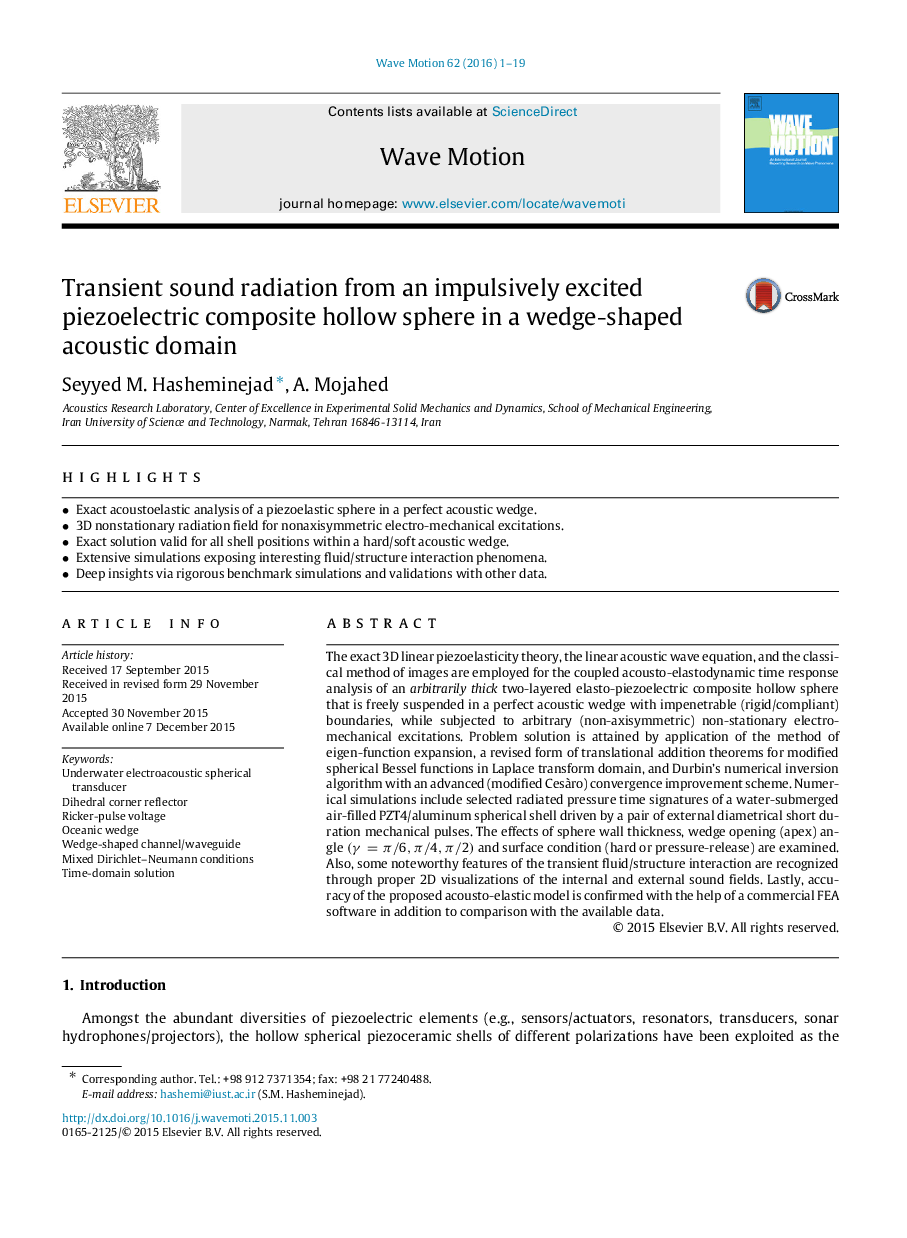| کد مقاله | کد نشریه | سال انتشار | مقاله انگلیسی | نسخه تمام متن |
|---|---|---|---|---|
| 1900035 | 1534269 | 2016 | 19 صفحه PDF | دانلود رایگان |
• Exact acoustoelastic analysis of a piezoelastic sphere in a perfect acoustic wedge.
• 3D nonstationary radiation field for nonaxisymmetric electro-mechanical excitations.
• Exact solution valid for all shell positions within a hard/soft acoustic wedge.
• Extensive simulations exposing interesting fluid/structure interaction phenomena.
• Deep insights via rigorous benchmark simulations and validations with other data.
The exact 3D linear piezoelasticity theory, the linear acoustic wave equation, and the classical method of images are employed for the coupled acousto-elastodynamic time response analysis of an arbitrarily thick two-layered elasto-piezoelectric composite hollow sphere that is freely suspended in a perfect acoustic wedge with impenetrable (rigid/compliant) boundaries, while subjected to arbitrary (non-axisymmetric) non-stationary electro-mechanical excitations. Problem solution is attained by application of the method of eigen-function expansion, a revised form of translational addition theorems for modified spherical Bessel functions in Laplace transform domain, and Durbin’s numerical inversion algorithm with an advanced (modified Cesàro) convergence improvement scheme. Numerical simulations include selected radiated pressure time signatures of a water-submerged air-filled PZT4/aluminum spherical shell driven by a pair of external diametrical short duration mechanical pulses. The effects of sphere wall thickness, wedge opening (apex) angle (γ=π/6,π/4,π/2)(γ=π/6,π/4,π/2) and surface condition (hard or pressure-release) are examined. Also, some noteworthy features of the transient fluid/structure interaction are recognized through proper 2D visualizations of the internal and external sound fields. Lastly, accuracy of the proposed acousto-elastic model is confirmed with the help of a commercial FEA software in addition to comparison with the available data.
Journal: Wave Motion - Volume 62, April 2016, Pages 1–19
